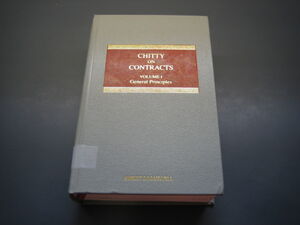Using Practitioner Texts
What are practitioner texts?

The Law Library at Northampton Square focuses on supporting students undertaking academic law courses here (e.g. the LLB, CPE/ GDL and LLM courses) therefore our book collection concentrates on academic texts.
Practitioner texts are the kind of materials that practitioners such as solicitors and barristers consult in order to help their clients. If you decide to do the Legal Practice Course or Bar Vocational Course in the future, you will soon become familiar with these works!
Examples of common practitioner texts are:
- Blackstone’s Criminal Practice
- Chitty on Contracts
- Clerk & Lindsell on Torts
- The White Book (Civil Procedure)
Practitioner texts are not only found in print form; many are also available online through Westlaw and LexisNexis Butterworths. For details of where to find them online, go to Lawbore's City Hub for E-Library/E-Texts.
For the purposes of this note we will focus on printed practitioner texts, as you may prefer to use them in this form when first starting out. We have some key practitioner texts in print form in our library here at Northampton Square; City Law students can also use The City Law School Library at Gray’s Inn Place which stocks a large number of practitioner texts for City University’s LPC and BVC students.
Why might you need to use them?
Whilst practitioner texts are mainly useful for practitioners themselves, or for those undertaking vocational law studies, you may sometimes need to refer to them as an undergraduate student.
- For instance, you may wish to consult them when preparing for a moot.
- Alternatively, you may find you need to use them when preparing an independent piece of work, such as an entry for an essay competition.
In either of these instances, you may find the guidance below useful when consulting a practitioner text for the first time.
As Chitty on Contracts is a popular work, we have given it a whole section to itself!
Keeping the legal brief/ instructions in mind
When you are reading a practitioner text, it is likely to be because:
- You have a legal problem you need to find an answer to
- You are doing research for an essay competition or other independent piece of work
Although this may sound obvious, always have the legal brief/ instructions next to you as you read the practitioner texts. This is so that you can keep the legal problem in mind whilst you are reading.
How to navigate your way around a practitioner text
Before you start reading a practitioner text, it can be helpful to take a few minutes to get to know its layout. Familiarity with the way in which the text is set out may save you valuable time when conducting your research.
Here is a list of things to look out for:
Chapter headings show you what topic areas the book covers.
Contents pages and indexes not only help to direct you to the correct part of the practitioner text which you need to go to, but also:
- Provide access to subheadings and subtexts from which to pick up on keywords already identified and new keywords which you may not have thought of
- Alert you to whether a whole chapter is relevant or whether the information you need is in certain paragraphs only
Where the practitioner text comprises of more than one volume, you should check whether it comes with only one index or whether there is an index for each volume.
Paragraphs often contain useful roadmaps or signposts (for example in Chitty on Contracts). Also, if you are trying to locate relevant sections quickly, then reading the beginning and the end of a paragraph is a good way of identifying what the entire paragraph is about.
Updating your sources
As practitioner texts are designed for solicitors and barristers who are providing advice to their clients, they need to be as up-to-date as possible. Therefore, as well as publishing new editions of practitioner works on a regular basis, publishers often issue interim works which update the information in the main work. These interim works are usually known as supplements or noters-up.
If you are using paper sources, and if you need the information to be up-to-date, check with a law librarian whether the text comes with a supplement or noter-up. Cases and legislation referred to in the texts should be updated separately using one of the electronic databases such as Westlaw or Lexis Library.
Updating can be less of a problem with online sources, as sometimes the changes are incorporated into the online text itself. At other times, you might need to click an update or comment button.
Updating can be tricky, so if you are unsure whether you need to do it/ how to go about it, please do ask the law librarian and we will help to guide you through it!
Chitty on Contracts

Volumes: Chitty on Contracts consists of two volumes:
• Volume I is entitled General Principles and contains Chapters 1 to 30.
• Volume II is entitled Specific Contracts and contains Chapters 31 to 44'''.
New editions of Chitty are published every few years, so if you need to use the most up-to-date version, check with the law librarian that the edition you are using is the latest one. By way of guidance, the latest edition as at April 2009 is the 30th edition.
- Indexes: There are very helpful and comprehensive indexes at the back of each volume, which will help you not only to locate the paragraphs containing the key words that you are looking for, but might also help you to identify additional key words which help with your research.
- One important feature to note is that the index in Volume I (General Principles) relates to the contents of Volume I only. Volume II (Specific Contracts) contains an index which relates to both Volumes I and II.
- Table of Contents: each volume starts with a Table of Contents, from which you will see that each volume is set out as follows...
- Tables of Statutes, Statutory Instruments and Non-UK Statutory Material
- Tables of Cases and European Cases
- Individual chapters (in the case of Volume I, chapters are also grouped into parts)
- Index
- Chapters: Each chapter has at the start a list of contents to be found within that chapter. It can act as a useful roadmap so that you can see at a glance how the chapter is laid out.
- Paragraphs: Each paragraph is numbered and is given a heading in bold. If the index directs you, for example, to paragraph 5-014, you will find this as the fourteenth paragraph in Chapter 5. Paragraphs often have footnotes as well, directing you to relevant case law and legislation.
Helpful hint! If you are looking for something in Chitty, try using the index to locate the section(s) you are looking for. The answer may be found by piecing together information contained in two or more paragraphs in different chapters, and the index will help you to find these. If you go straight to the Contents page to try to find a chapter that you think will be relevant, you may be missing out on valuable information that only the index can provide!
- Supplements: In order to keep the information in Chitty as up-to-date as possible, the publishers issue special updating works from time to time called supplements. Check with the law librarian if there is a supplement which you need to consult.
- The paragraph numbers in the supplement match up with the paragraph numbers in the main volumes themselves. Therefore, if you need to check whether the law as stated in paragraph 21-079 of Chitty is still correct, you need to see if there is a corresponding paragraph 21-079 in the supplement with updating information.
- Updating footnotes: as mentioned above, in Chitty you will find lots of helpful footnotes with further information, e.g. case citations and legislation. Remember that if you need to make sure that this information is also up-to-date, you will need to check their status on the online databases such as Lexis Library or Westlaw.
Some general notes on accessing practitioner texts online
You can find out whether a practitioner text is online by referring to Lawbore's City Hub via E-Library/E-Texts. If you then click on the link to the practitioner text in question, you will be taken through to the relevant page of the database.
If the practitioner text is on Westlaw or Lexis Library, you will be given two options. You can either:
- Search the practitioner text using key terms; or
- Browse the text
This latter function can be helpful if you need to get an overview of what the text covers. Depending on the practitioner text in question, you might be given a choice of browsing the work with or without the latest updating supplement. If you want to make sure you are up-to-date, always make sure that you are looking at the practitioner text with supplement!
Finally, some of the sections of the online practitioner works will contain footnotes, in the same way as the paper versions. These can be really helpful, as they may contain a link taking you straight through to the case or legislation in question!
If you find that you can’t access the case or legislation you are looking for, this might be because you are using Lexis Library and the case/ legislation might only be available on Westlaw (or vice versa). In this case, just check which database the case/ legislation is on, and use that to find your source.
The final word
Practitioner texts can take a bit of getting used to, but don’t let this put you off! Remember that:
- They are a rich source of information
- They have the ability – through supplements, noters-up, online versions – to be one of the most up-to-date sources of law available to you
- If you get familiar with some of the practitioner texts now, this will stand you in good stead if you go on to do the LPC or BVC course
If you have any problems or queries, just ask the law librarian.
Many thanks to Hilary Vieitez for introducing this difficult subject area.